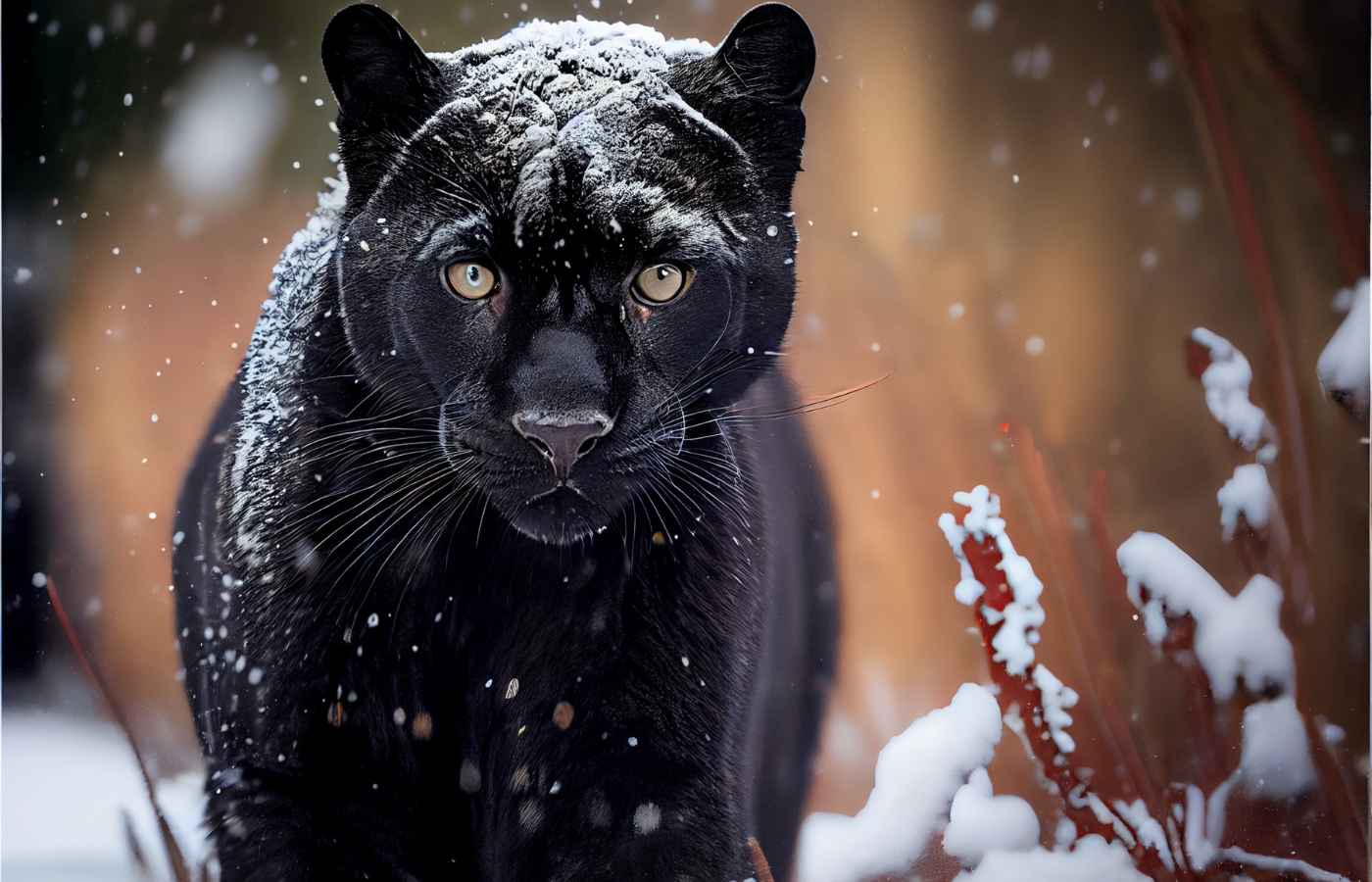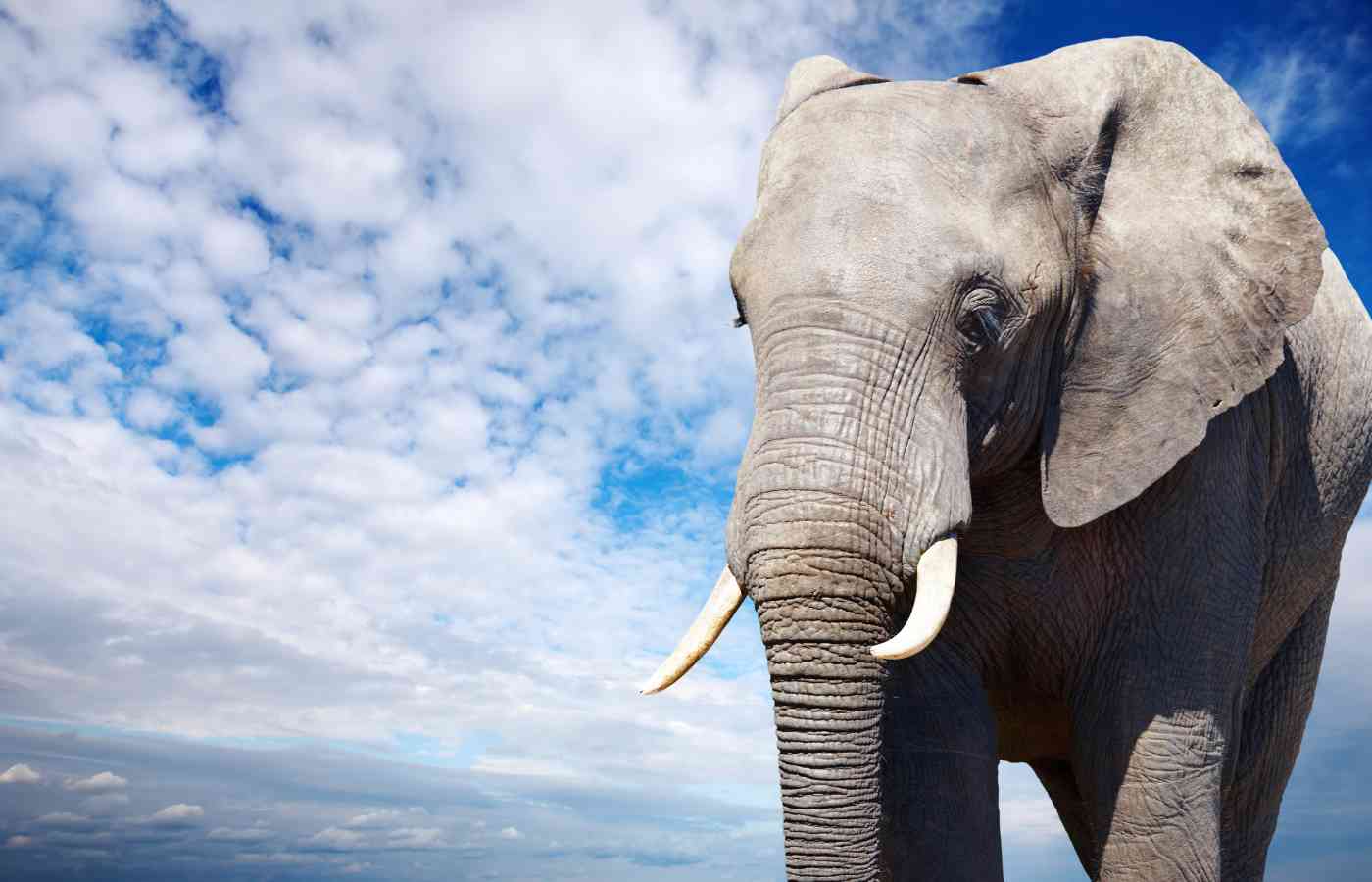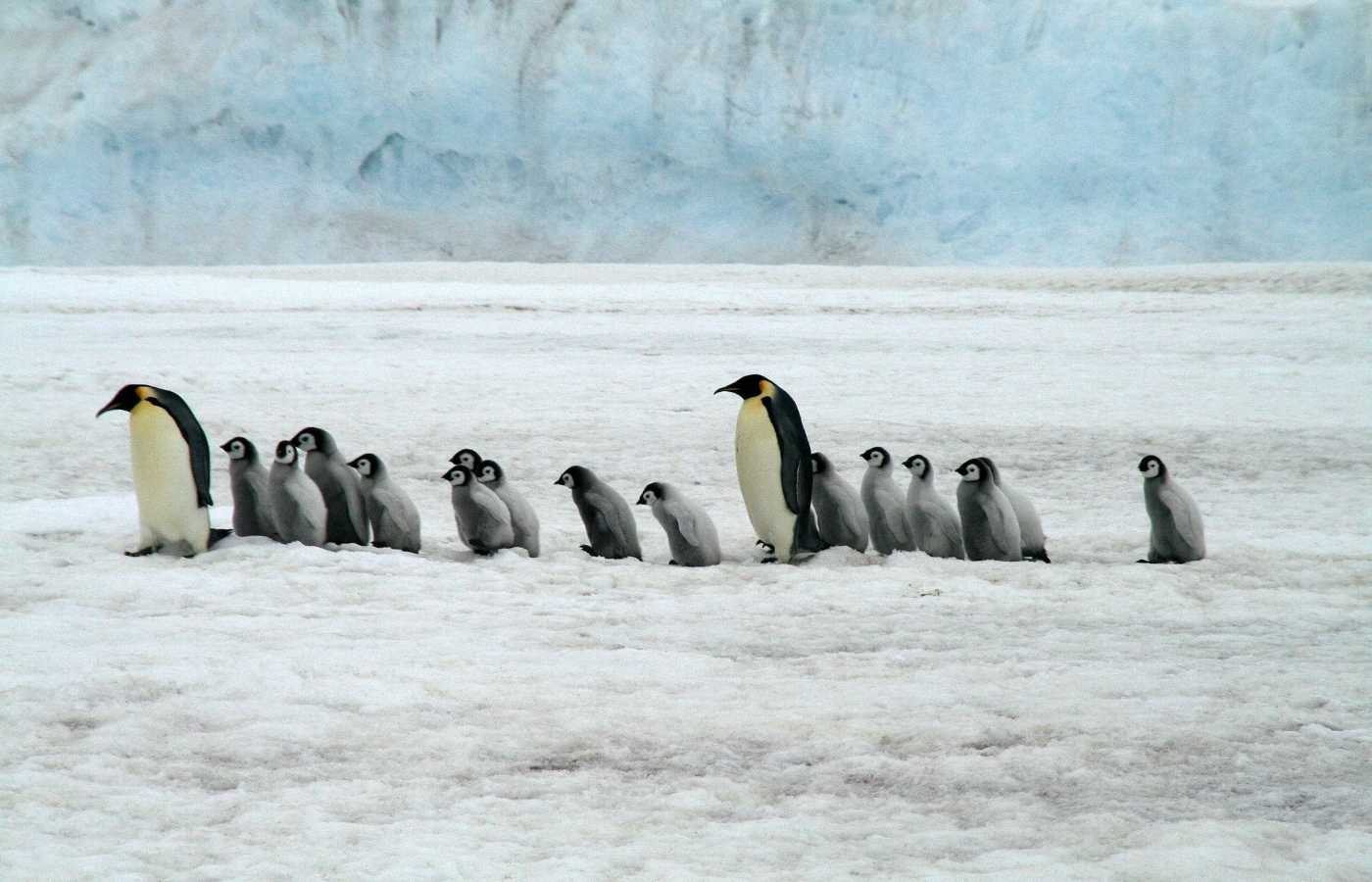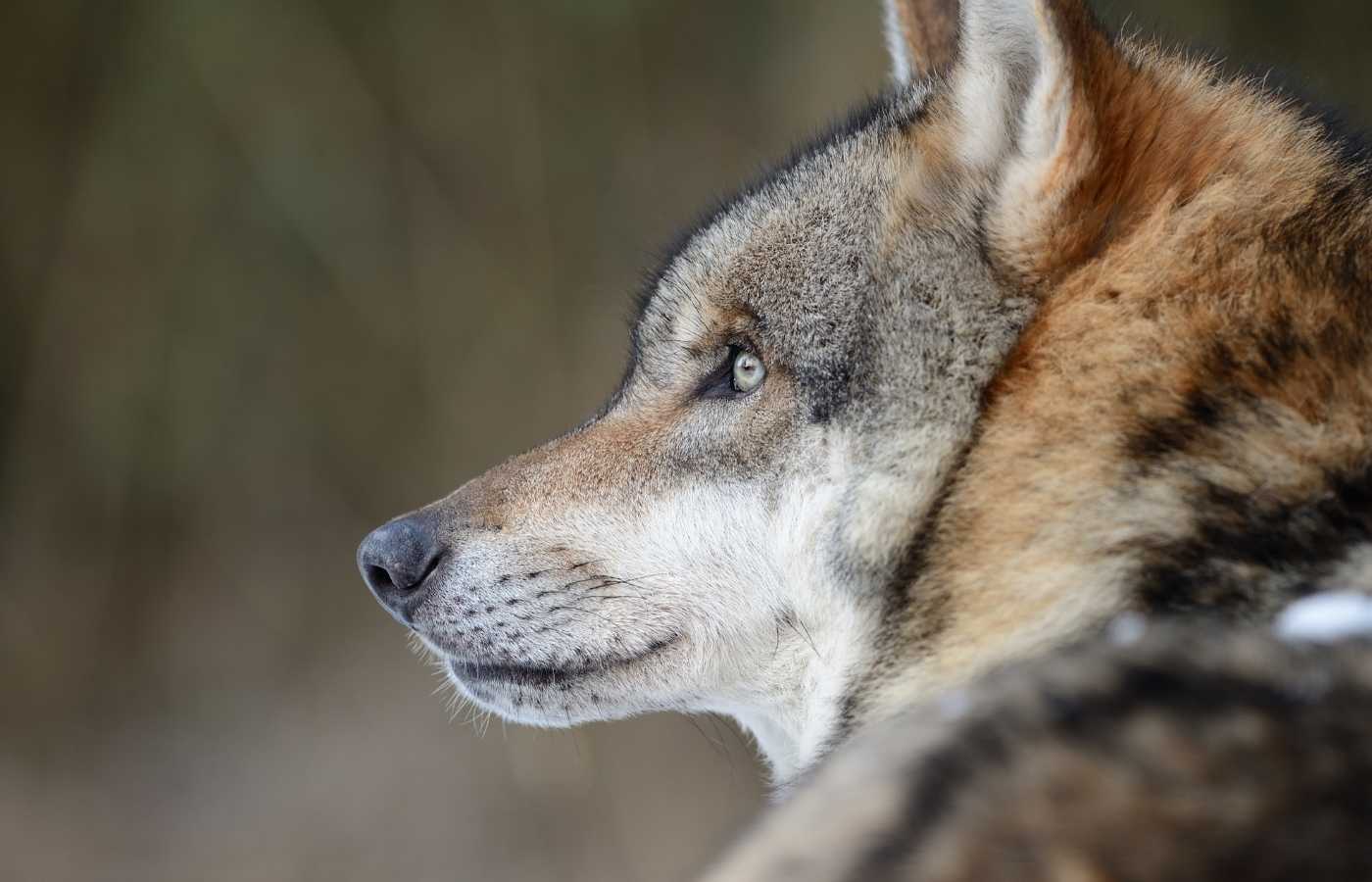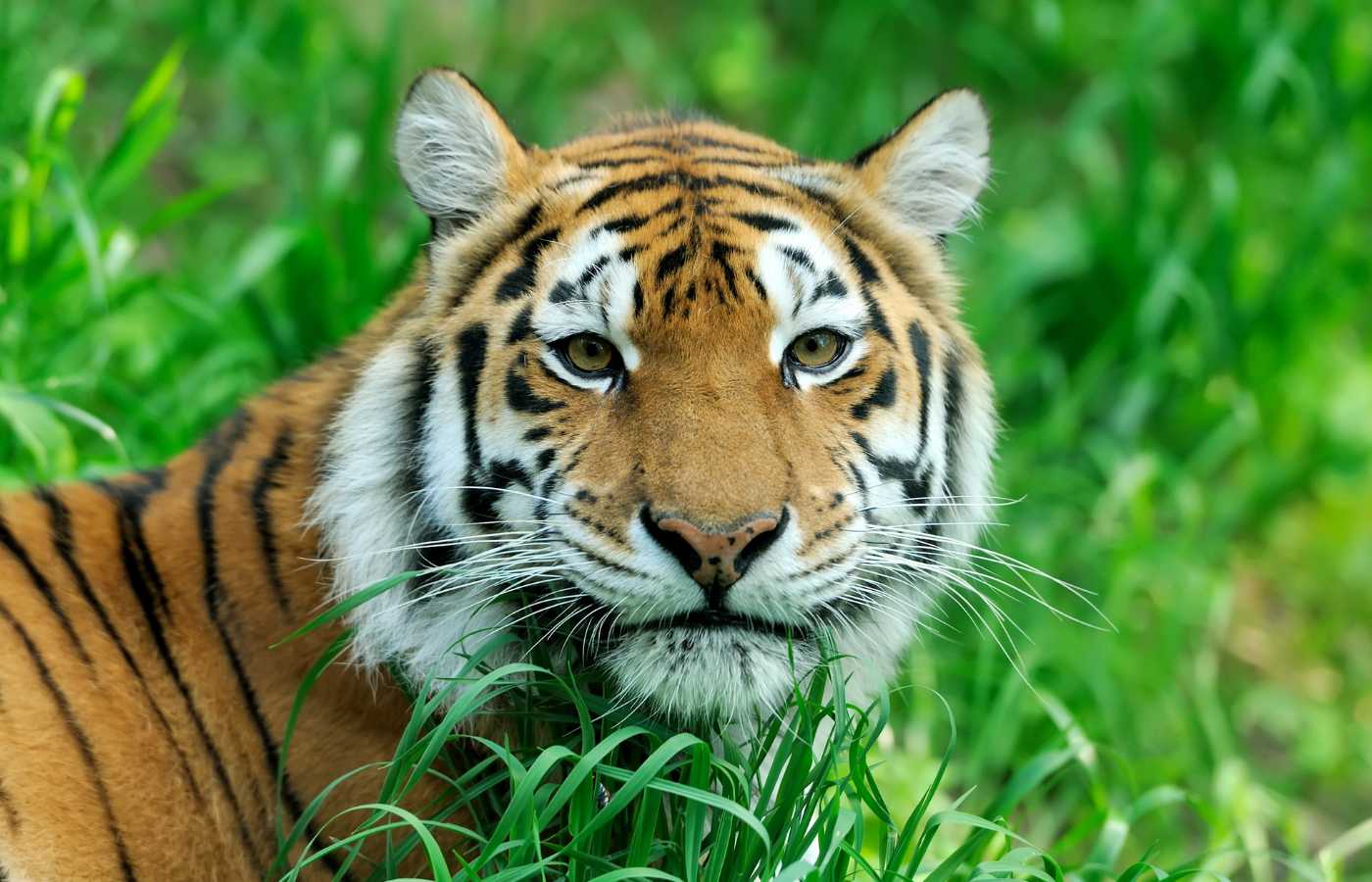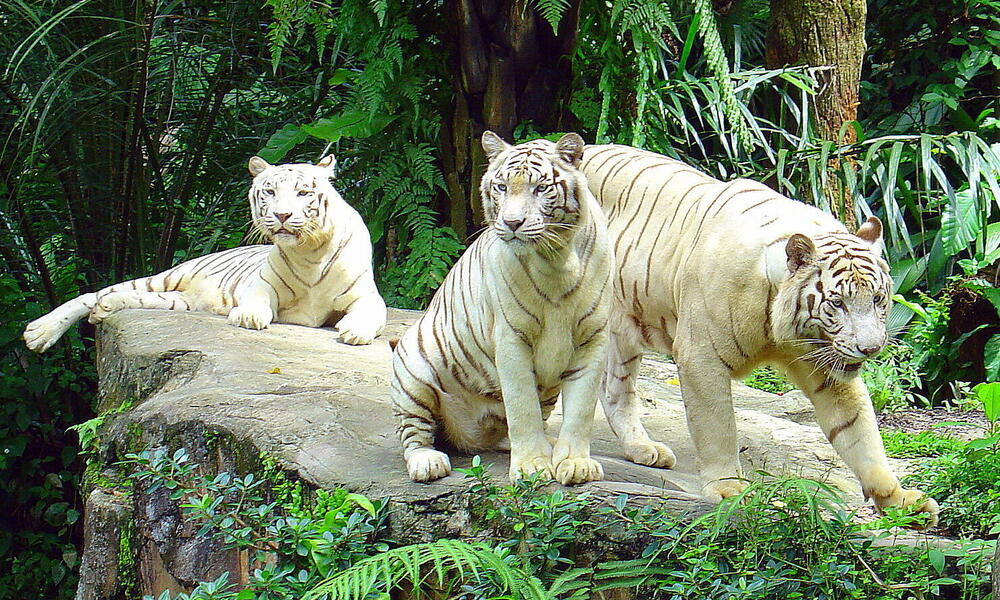Black panthers are some of the most majestic and mysterious creatures on earth. It’s no wonder we are captivated by them!
If you’re looking for some interesting and surprising facts about black panthers to share with your kids, you’re in the right place.
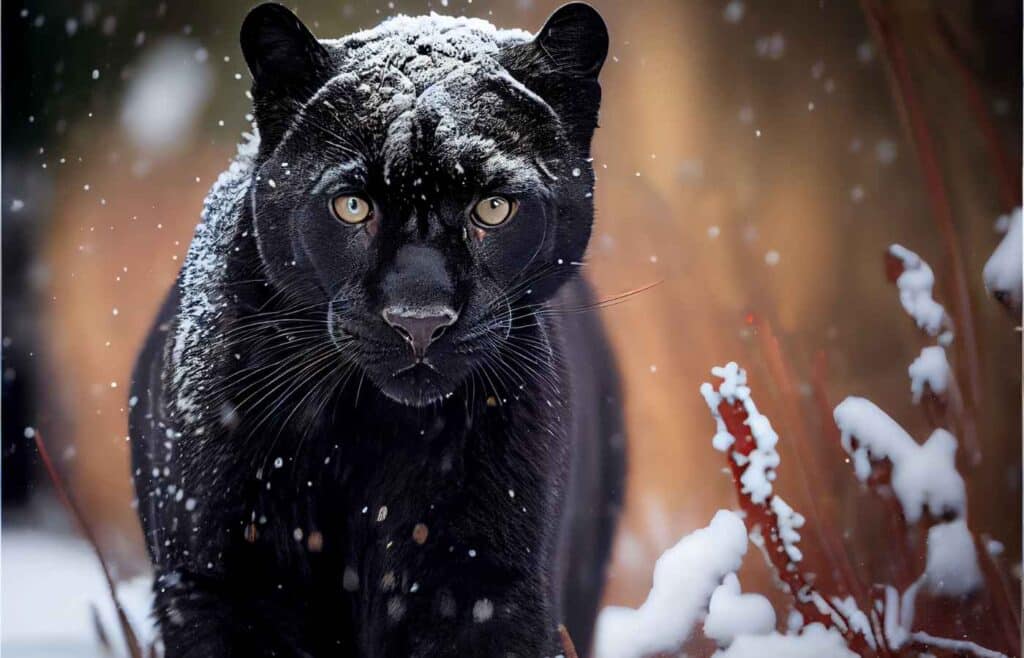
In this blog post, we’ve gathered 50 fun facts about black panthers that are sure to capture the imaginations of kids of all ages.
From their habitat and behavior to their unique genetic mutation and physical characteristics, there is so much to learn about these magnificent big cats.
So, grab your little ones and get ready to discover some fascinating facts about black panthers:
General
1. Black panthers are very rare in the wild. Some scientists say estimate they make up only 11% of the leopard population.
2. Black panthers are not a separate species of big cat, but rather a genetic mutation of leopards, jaguars, and other big cats.
The mutation causes an excess of melanin, which makes their fur appear black.
(In other words, they are not a separate or distinct species of large cats. They are a melanistic variant of several species of big cats, including leopards, jaguars, and even cougars. So, black panthers are either melanistic leopards, jaguars, or cougars. They are simply black jaguars or black leopards or black cougars.)
3. Their black coloration is caused by a genetic mutation called a recessive allele.
4. In order for a panther to be black, it must inherit two copies of the recessive allele, one from each parent.
If it inherits one dominant allele and one recessive allele, it will have the typical spotted coat of a non-melanistic leopard or jaguar, but will still be a carrier of the recessive allele. When two carriers mate, there is a chance that their offspring will inherit two copies of the recessive allele and exhibit the black coloration.
5. The scientific name for the black panther depends on the species.
If the black panther is a melanistic variant of the leopard, its scientific name is Panthera pardus. If the black panther is a melanistic variant of the jaguar, its scientific name is Panthera onca.
Size & Speed
6. On average, male black panthers can weigh up to 200 pounds and measure up to 6 feet in length, while females are smaller and weigh around 100 pounds.
7. Black panthers can run at speeds of up to 50 miles per hour, which makes them one of the fastest big cats in the world.
8. They can jump up to 20 feet in a single bound and climb trees with ease.
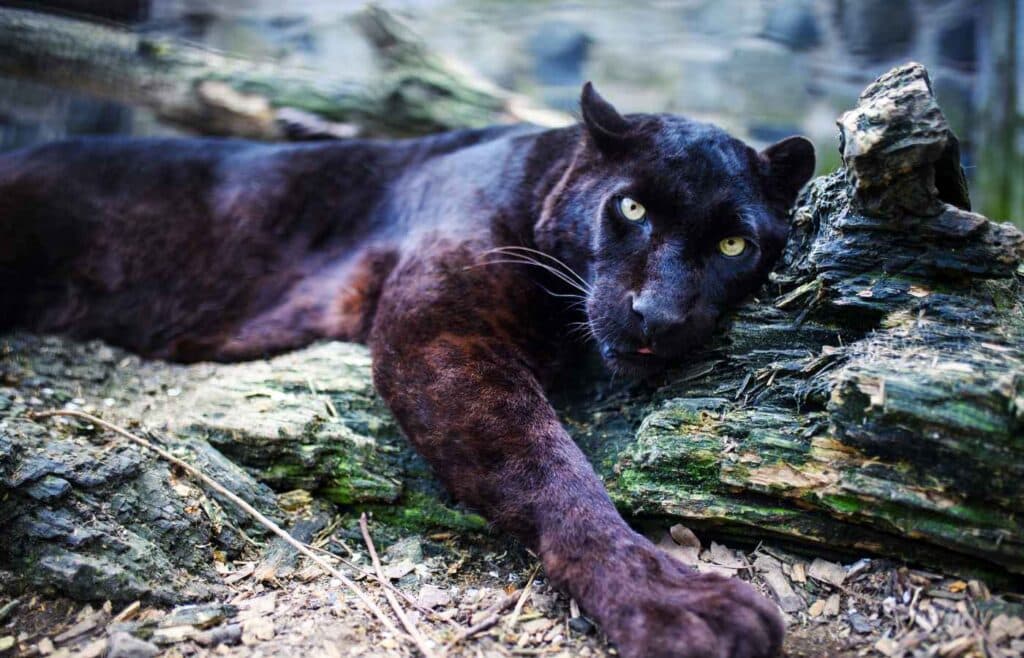
9. The size and weight of black panthers can vary depending on their species and location. For example, a black panther that lives in the dense forests of Southeast Asia may be smaller than one that lives in the open savannas of Africa.
10. The tail of a black panther is long and muscular, and can be up to 3 feet in length.
11. They use their tail for balance and stability when climbing, running, and stalking prey.
12. The tail is also used for communication, with different movements and positions conveying different messages to other panthers.
13. Black panthers are typically smaller than lions and tigers.
Appearance
14. Despite their name, these wild cats are not always black. In fact, they can range in color from a dark brown to a reddish-brown.
15. If you look closely, you can see spots or rosettes in their fur that are lighter than the rest of the fur. This is because the dark fur is actually caused by a mutation of the gene that controls the distribution of pigments in the fur.
16. The genetic mutation that causes the black coat of fur in panthers is called melanism. It is the opposite of albinism, which causes a lack of pigmentation and results in white fur.

17. The melanistic mutation is recessive, which means that both parents need to carry the gene for their offspring to be born with black fur. This is why black panthers are relatively rare in the wild.
18. Melanism is not limited to big cats. It has been observed in other animals, including wolves, squirrels, and even penguins.
19. Black panthers have powerful jaws and sharp teeth that they use to catch and kill their prey.
20. Their upper lip is flexible and can be retracted to reveal their sharp teeth, which they use to deliver a powerful bite to their prey.
21. Black panthers have a rough tongue that is covered in small, backward-facing barbs called papillae, which helps them to groom themselves and to strip meat off the bones of their prey.
Behavior
22. Black panthers are typically solitary animals, except during mating season or when females are caring for their young.
23. They are very territorial and will mark their territory with urine and vocalizations to warn other panthers to stay away.
24. Like most big cats, black panthers are nocturnal, which means they are most active at night.
25. Black panthers are ferocious predators. Melanistic jaguars and leopards have the same hunting behaviors and abilities as their non-melanistic counterparts. They typically ambush their prey, using their stealth and powerful jaws to quickly dispatch their prey.
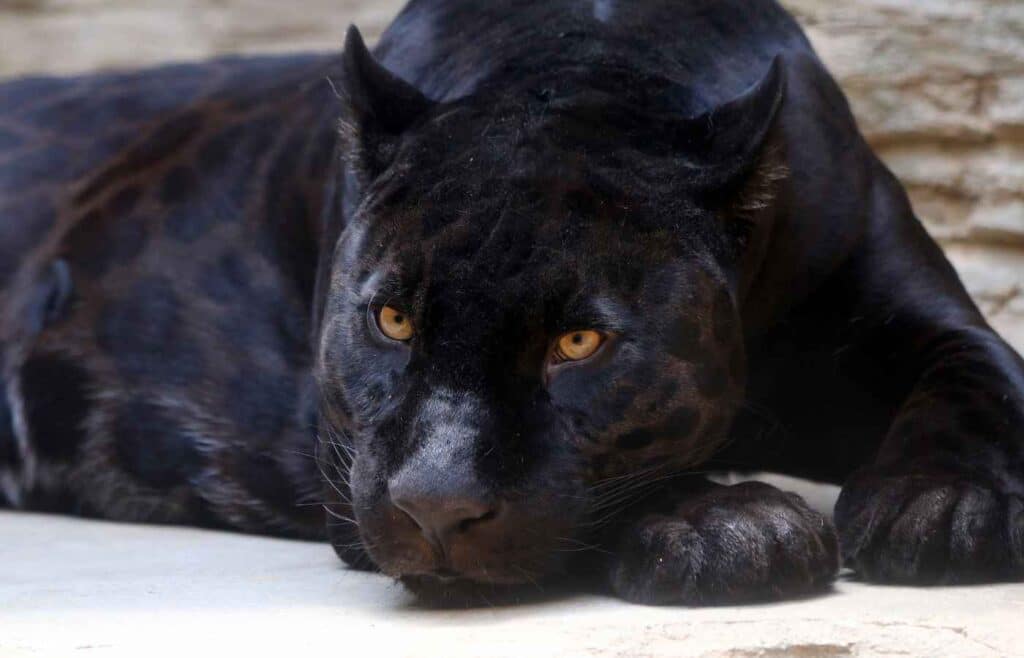
26. Black panthers are apex predators, which means that they are at the top of the food chain in their habitat. They hunt a variety of prey, including deer, wild boar, and monkeys.
27. They are carnivorous animals, which means they eat mostly meat.
28. Their diet consists of a variety of larger prey, including deer, wild boar, monkeys, birds, and smaller mammals.
29. Black panthers are stealthy hunters and will stalk their prey before pouncing on it. They have sharp claws and teeth that they use to kill their prey quickly.
30. Black panthers are strong swimmers! They are known to swim across rivers and lakes in search of prey. Some black panthers have been observed swimming across rivers and lakes that are up to 6 miles wide.
31. They can climb trees! Black panthers are skilled climbers and will often climb trees to rest or hunt.
32. Black panthers have been known to build nests in trees for resting or sleeping. These nests are typically made from branches, leaves, and other plant materials, and are located high up in the tree canopy for protection from predators.
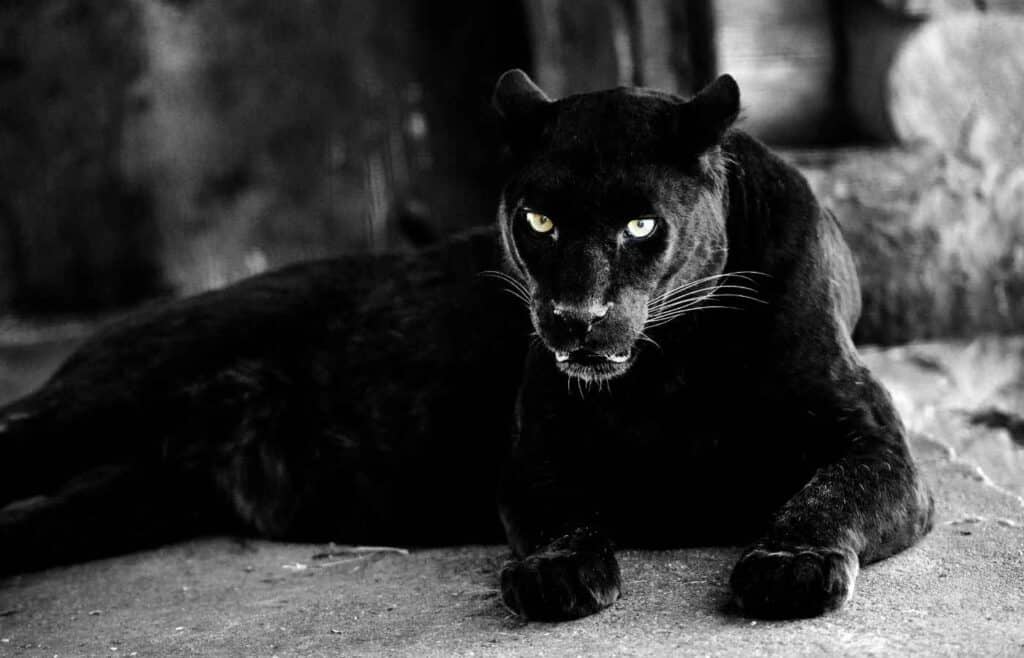
33. Black panthers use a variety of vocalizations to communicate with each other, including growls, hisses, and purrs.
34. Panther cubs are playful and will often engage in mock fights and play games with each other.
35. During the mating season, male panthers will mark their territory with urine and vocalizations to attract potential mates. Males may also fight with each other for the right to mate with a female.
Senses
36. Black panthers can see in the dark! They have excellent eyesight, thanks to their large pupils that allow more light into their eyes.
37. They also have excellent hearing and can hear sounds that are too quiet for humans to detect.
38. Black panthers have padded paws that make them silent when they walk and help them to sneak up on their prey.
Female Black Panthers
39. Female panthers are usually smaller and lighter than male black panthers. This is because males need to be bigger and stronger to defend their territory and compete for mates.
40. The mother panther is known for her protective behavior towards their cubs. They will fiercely defend their young from any potential predators, even if it means putting themselves in danger.
41. Female black panthers often raise their cubs on their own. They will teach their cubs how to hunt and survive in the wild, but will eventually encourage them to become independent and leave the den.
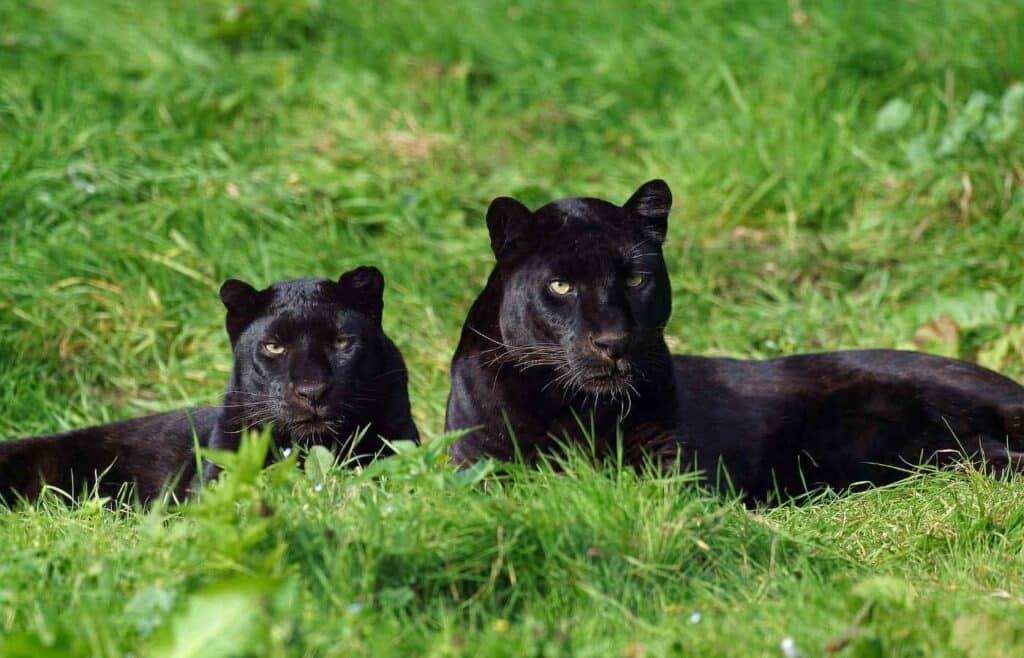
42. Female black panthers are known to be more agile and stealthy than males, which makes them better hunters. They are also known to be more patient and strategic, which helps them to conserve energy while waiting for prey to come within striking distance.
43. Female black panthers are often more social than males and are known to form close bonds with other females. They will often travel and hunt together, and will even share kills with each other.
Babies
44. The gestation period for a black panther is approximately 90 to 105 days.
45. A mother panther may give birth to a litter of 2 to 4 cubs, but litters of up to 6 cubs have been recorded in rare cases.
46. Black panther cubs weigh just over a pound at birth, which is about the same weight as a carton of eggs.
47. Panther cubs are born with a coat of soft fur that is covered in spots or rosettes. The spots help to camouflage them in their environment and protect them from predators.
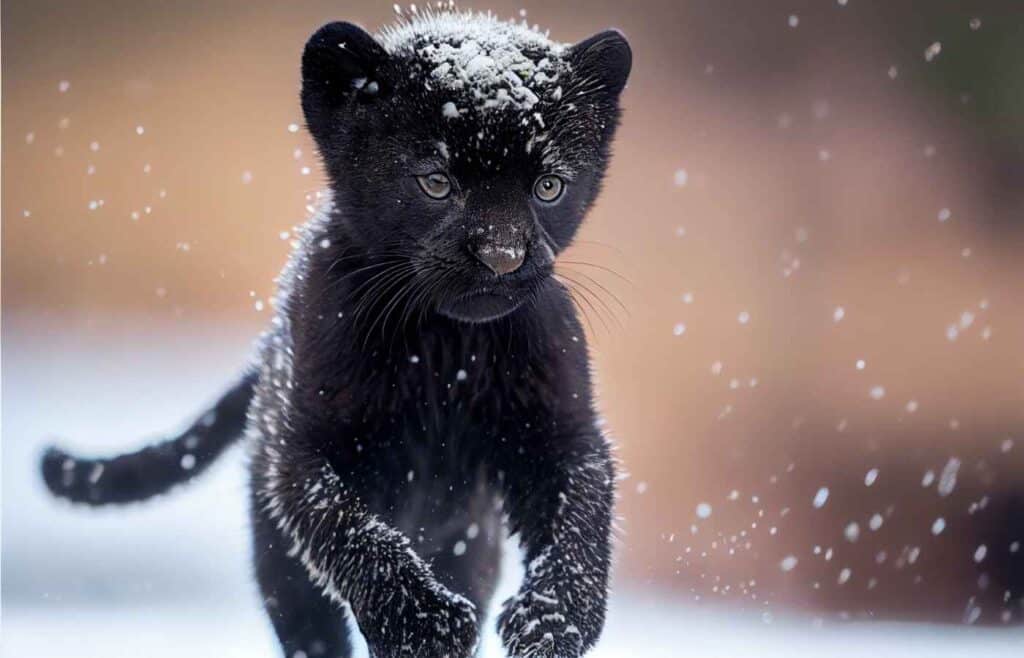
48. The cubs are born blind and helpless and will rely on their mother for food, protection, and guidance until they are old enough to become independent.
49. Panther cubs open their eyes for the first time at around 1 to 2 weeks old, but their vision is still blurry and they rely on their sense of smell and touch to navigate their environment.
50. Panther cubs begin to eat solid food at around 2 months old, but they will continue to nurse from their mother until they are 6 to 8 months old.
51. Panther cubs are playful and curious, and they will spend much of their time playing with each other and exploring their surroundings. Their playful behavior includes mock fights, chasing each other, and playing with sticks and other objects.
Habitat
52. Black panthers can be found in a variety of habitats, including rainforests, swamps, savannas, and even deserts. They are adaptable animals and can survive in a wide range of environments.
53. Black panthers are found in many areas around the world, including southern India, South America, Central America, Africa, Central Asia, and Southeast Asia. In Latin American, black panthers live in Brazil, Mexico, and beyond.
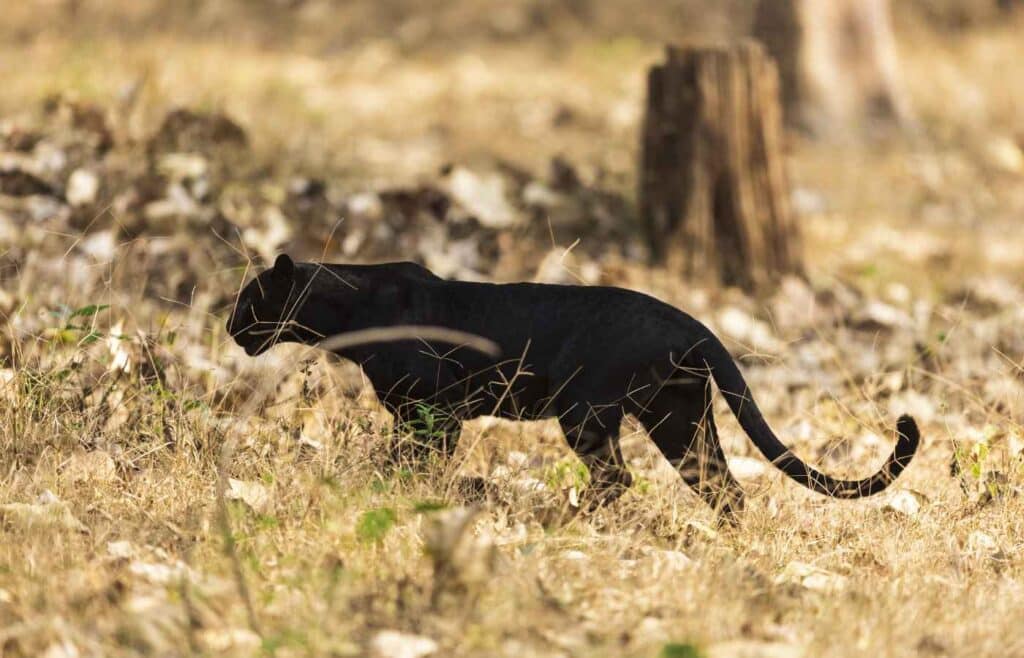
54. In India, they are known as black leopards, while in Africa, they are known as black jaguars.
55. Habitat degradation has a significant impact on black panther populations. As it destroys and fragments their land, they are forced to compete for resources and territory with other animals, which can lead to increased conflict and reduced access to food and water.
Florida Panthers
56. Florida panthers (Puma concolor coryi) are a subspecies of the North American cougar, also known as mountain lion, puma or cougar.
57. They are the only known breeding population of pumas found east of the Mississippi River.
58. Florida panthers are found in southern Florida, primarily in the Everglades National Park and surrounding areas, and are one of the most endangered mammals in the United States.
59. Florida panthers have a tan or brown coat, with a whitish underside and black markings on their face, ears, and tail.
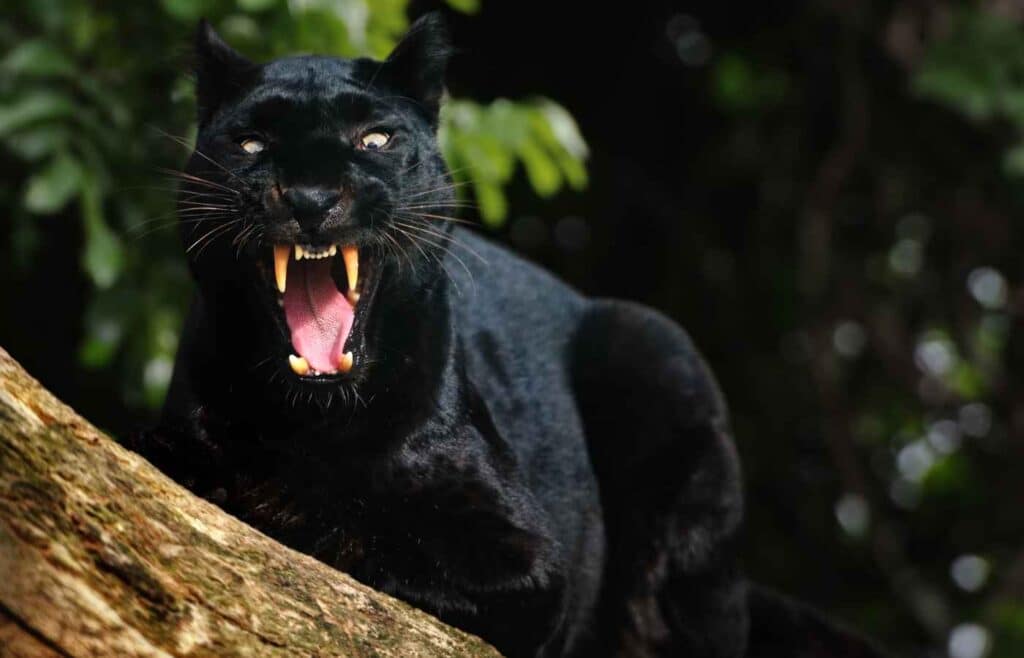
60. They are solitary and territorial animals, and their diet consists mainly of deer, wild hogs, and smaller mammals like raccoons, rabbits, and armadillos.
61. The population of Florida panthers declined drastically in the 20th century due to habitat loss and hunting, with only 20 to 30 individuals remaining in the wild by the 1990s.
62. Conservation efforts, including captive breeding and habitat protection, have helped to increase their numbers to an estimated 120 to 230 individuals in 2021.
63. Florida panthers are considered a symbol of Florida’s natural heritage and are protected under state and federal laws.
Endangerment & Conservation
64. Black panthers are listed as vulnerable on the IUCN Red List of Threatened Species.
65. Habitat loss and fragmentation are the biggest threats to black panthers. As forests are cut down for agriculture and urbanization, the black panther’s habitat shrinks, making it difficult for them to find food and mates.
66. Black panthers are often targeted by poachers for their skin and other body parts, which are used in traditional medicine and as luxury items.
67. As humans continue to expand into the territories of black panthers, conflicts can arise when they come into contact with livestock or humans. This can lead to retaliatory killing of black panthers by humans.
68. Climate change can also have a negative impact on black panther populations by altering their habitat and disrupting their natural breeding and feeding patterns.
69. Black panthers are particularly vulnerable to inbreeding because their populations are small and fragmented. Inbreeding can lead to reduced genetic diversity, which can make populations more susceptible to disease and other threats.
70. Conservation efforts are underway to protect black panther populations and their habitats. These efforts include the creation of protected areas, reforestation projects, and programs to reduce human-wildlife conflict.
71. In some cultures, black panthers are considered to be symbols of strength, courage, and protection.
How Can You Help
By protecting black panthers and their habitats, we can help to ensure the survival of these magnificent animals for future generations.
- Learning about black panthers: One of the best ways to help black panthers is to learn more about them. You can read books or watch documentaries about black panthers to better understand their behavior and habitat needs.
- Supporting conservation efforts: You can support conservation efforts by donating money to organizations that work to protect black panther habitats, such as Panthera, the World Wildlife Fund, or other responsible wildlife sanctuaries.
- Spreading awareness: You can spread awareness about black panthers and their endangered status by talking to your friends and family, writing letters to local officials, or even creating posters to hang up in your community.
- Reduce your carbon footprint: Climate change is a major threat to black panther populations, so you can help by reducing your carbon footprint. This can include walking or biking to school, turning off lights when they leave a room, and eating less meat.
- Being responsible tourists: If you ever travel to an area where black panthers live, they can be responsible tourists by not littering, staying on designated trails, and respecting the animals’ space.
By taking these actions, kids can play an important role in helping to protect black panthers and their habitats.
I hope you loved reading through these amazing facts with your kids.
Black panthers are fascinating and impressive animals that have captivated human imagination for centuries.
Their unique black coat, physical abilities, and mysterious behavior make them an intriguing subject for kids and adults alike.
However, as we’ve seen, these animals face numerous threats to their survival, including habitat loss, poaching, and human-wildlife conflict.
It’s important for us to understand these threats and work towards protecting black panther populations and their habitats.
By taking action to conserve these magnificent animals, we can help ensure that they continue to thrive in the wild for generations to come.
Sources:
National Geographic: Black Panther
Live Science: Black Panther Facts
National Geographic Kids: Black Panther Facts
Defenders of Wildlife: Black Panther
Smithsonian’s National Zoo & Conservation Biology Institute: Black Panther
National Geographic Kids: Black Panther Facts
World Wildlife Fund: Black Panther
Smithsonian’s National Zoo & Conservation Biology Institute: Black Panther
Panthera: Black Panther
San Diego Zoo: Black Panther Fact Sheet
Related Posts:
50 Mind-Blowing Monkey Facts Your Kids Will Love
Emperor Penguin Facts for Kids
Calie Herbst, Editor-in-Chief of Milwaukee With Kids, has spent over a decade combining her experiences as a parent of three to create a hub for Milwaukee’s family adventures.
Her decade-long teaching career in Milwaukee Public Schools and academic background, including a Master’s in Teaching from Marquette University and dual B.A.s in Sociology and Spanish from the University of Wisconsin – Madison, fuel her passion for inclusive and engaging family content.
Calie is also a recognized voice in local media, contributing to WISN Channel 12 News, WTMJ Wisconsin Morning News, Fox 6’s Real Milwaukee, and B93.3.
Discover more about Calie’s journey and editorial approach on her About Page and Editorial Policy Page.


